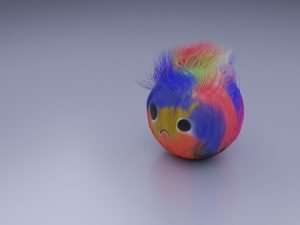This is the first of three posts about moebius art and copyright (aka fair use). The second post will be about copyright and copying, and the third about moebius art and plagiarism.
Disclaimer: I am not a lawyer and this is not legal advice. Check with your own lawyer before doing anything you might regret (for example, posting something on the internet that could get you sued).
What is moebius art?
Before we talk about what moebius art is, let’s talk about what it’s not. Moebius art is art which copies another work of art in such a way that it can’t be proven to be an original work or a copy; where no one can tell for sure whether it’s a plagiarized work or an homage.
Trying to define moebius art is tricky because it’s not clear how to tell when you’ve found it. If two works are sufficiently similar, surely they are both plagiarisms? If two works are sufficiently different, isn’t one of them clearly an homage? And if one work has been copied from another but the copy has been altered so much that it no longer resembles the original very closely, isn’t that enough to make the copy an original work of its own
On the internet, everyone needs a lawyer. This is because of copyright law, which is designed to prevent people from stealing other people’s work.
Copyright law is a very powerful tool, so it makes sense to understand how it works and what you can do to get what you want while avoiding trouble. For more information on how copyright law applies to art, visit the blog Legal Art, by artist Amanda Brown. Also on that site you will find resources for artists whose rights have been infringed upon.
“Moebius Art” is an abstracted and simplified work of art, often consisting of only a few lines. Its purpose is to encourage and facilitate the adaptation of works which are protected by copyright.
The moebius art symbol shown above incorporates a copyrighted work in order to comment on the ways in which copyright law may impact upon artistic freedom. By incorporating this copyrighted work, the moebius art symbol attempts to illustrate how copyright law may be applied to simple, abstracted and simplified works of art.
If you would like to use this symbol for non-commercial purposes (including posting it on your own web site or linking to it from your web site), you may do so without first asking permission from the copyright owner provided that you include this paragraph (including the links) with the image:
The existence of this page does not imply consent on the part of the rights holder for use of his/her/its trademark(s) in association with any product or service mentioned therein. The owner’s trademarks are used for identification purposes only. The trademarks belong to their respective owners, and no claim is made to any rights other than those owned by the trademark holder.”
I thought I was being so clever. I’d figured out a new kind of art, and I wanted to share it with the world. But I couldn’t tell anyone about it, because if I did, they’d take it away from me.
I had hit on the idea of creating art with no front or back side. If you made a painting or a sculpture shaped like this and then tried to mount it on the wall, you’d see that either half of it would serve equally well as a front side. It could be hung either way. The problem was that if you described the work in any way that explained how it worked, then you had made an infringing derivative work. You couldn’t even explain how to make one without making one yourself.
This sort of thing was already familiar from computer software, where prohibitions against reverse engineering are common. But this was different because there was no attempt to keep the work secret — on the contrary, there was an attempt to publish it widely — and because it wasn’t just a matter of copying code; anyone could copy code without infringing copyright. If someone else created an infringing derivative work based on mine, they would have committed copyright infringement without my doing anything wrong at all!
I decided not to risk talking about my
“Why should a sculptor be prohibited from using a technique that is available to a painter or a collagist?” asks the British sculptor Richard Deacon in an interview with Elizabeth Manchester.
Deacon has been creating sculpture that incorporates tape since the late 1960s, and he has recently added photography to his repertoire.
In 2002 he received a letter from the Andy Warhol Foundation for the Visual Arts stating that it had not licensed his use of Warhol images in his work, and that he would have to remove those works or risk being sued by the foundation.
“My assumption was that I could make a sculpture out of any material I liked,” says Deacon, who was then serving as president of the Royal Academy of Arts. “It was quite an eye-opener.”
The issue is one of copyright infringement. A copyrighted image is protected whether it appears on canvas or is incorporated into another work of art. The artist cannot even make multiple copies of an original work without permission from the copyright holder. And if an artist wants to incorporate something into his work that is protected by copyright, he must first ask for permission.
But what about artists who use existing images for purposes such as parody and social criticism? Or when does an
The doctrine of fair use can be a powerful ally to the artist. All works of art are built on the works of others. Some are built on the works of others in ways that are visible and some are built on the works of others in ways that are not visible. Both kinds exist because artists empathetically channel the work of others in order to make something new and significant.
Tales of invisible influence are generally inspirational, but there is also a darker side to this phenomenon. It is often difficult for an artist to know when their work has been appropriated by another artist. The line between inspiration and infringement is often blurry, especially when it comes to parody and satire, which are protected by the fair use doctrine.
As a result, an artist’s best protection against unfair appropriation is not copyright law alone but a thorough understanding of how copyright law interacts with fair use doctrine and creativity in general. This blog will explore different aspects of these interactions, including what constitutes fair use, what does not constitute fair use, who decides whether something constitutes fair use, how to seek permission for your work, how to protect your work from others seeking permission, and more.”
“Copyright” is the legal term for the specific kind of intellectual property protection that applies to “original works of authorship fixed in any tangible medium of expression.” Copyright covers a wide range of creative endeavors, from writing and music to sculpture and software. As a result, copyright ownership can be quite complex.
COPYRIGHT OWNERSHIP
The owner of the copyright in a work has certain exclusive rights over how that work may be used or reproduced by others. The owner can determine who is authorized to use their work and on what terms, but they can’t make other people’s work their own. For example, copyright law does not allow you to alter someone else’s work and pass it off as your own — even if you make only minute changes to it.
In order to fully understand copyright ownership, one must also understand something called “works made for hire.” Works that are created as part of one’s employment are considered works made for hire if the employer owns the intellectual property rights in them. Employees do not own the copyright in these cases; employers do. So it’s important for employees to be clear about their rights when they create an original work on behalf of their employer.*


